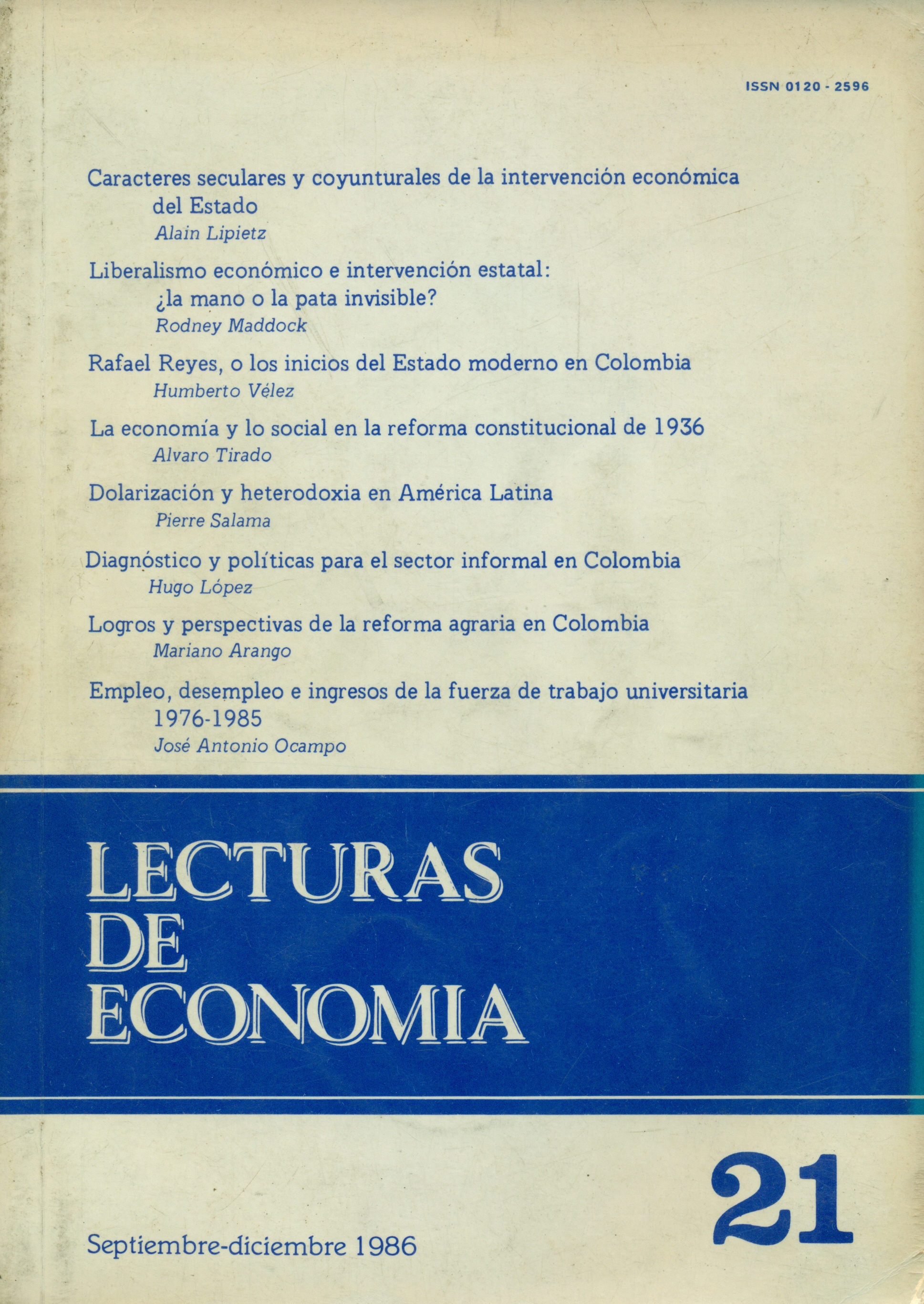Dolarización y heterodoxia en América Latina
DOI:
https://doi.org/10.17533/udea.le.n21a7956Abstract
• Resumen: En el marco del endeudamiento externo latinoamericano se presenta el fenómeno de la dolarización, que se manifiesta ya sea por la sustitución de monedas --fuga de capitales-- o bien por la nueva función que ejercen los títulos indexados, según el tipo de cambio en dólares, en lugar de la moneda local. Los objetivos de las nuevas políticas económicas de Argentina y Brasil -lucha contra la inflación, desindexación generalizada, reindustrialización... - se enfrentan a la dificultad de tener que ser alcanzados al mismo tiempo que debe asegurarse un servicio mínimo de pago de la de la externa. El interrogante que se plantea entonces es si el servicio de la deuda externa es un obstáculo mayor para alcanzar esos objetivos, o si para debilitar la dolarización se requieren medidas más heterodoxas -moratoria parcial o temporal de la deuda y una modificación de la distribución de los ingresos- que los contemplados en los planes Austral y Cruzado. Para responder a las cuestiones planteadas, además del análisis de las relaciones entre fuga de capitales y deuda externa y entre políticas económicas y dolarización, en esto artículo se estudian los factores relativos a los cambios en las estructuras económicas y en los regímenes de acumulación y sus efectos sobre la deuda externa, diferentes según el país y según las épocas.
• Abstract: One phenomenon which characterizes the current problems of Latin American external debt is the process of dollarization (the progressive substitution of U.S. dollars, actual dollars or prices denominated in that currency, for the local monies). The new monetary plans of Argentina and Brazil, for example, are confronted by the need lo service the debts of those countries and restore confidence in domestic coin. This paper poses the question of whether these can be achieved by orthodox methods or if a heterodox approach, involving debt moratoria and income redistribution, is likely to be more successful.
Downloads
Downloads
Published
How to Cite
Issue
Section
License
This page, by Universidad de Antioquia, is licensed under a Creative Commons Attribution License.
Authors who publish with this journal agree to retain copyright and grant the journal right of first publication, with the article licensed under a Creative Commons Attribution-NonCommercial-ShareAlike License allowing others to share it as long as they acknowledge its authorship and original publication in this journal.
Authors can enter into separate, additional contractual arrangements for the non-exclusive distribution of the journal's published version of the work (e.g., post it to an institutional repository or publish it in a book), provided that these arrangements be not for profit and the journal be acknowledged as the original source of publication.
Authors are permitted and encouraged to post their papers online (e.g., in institutional repositories or on their websites), as it can lead to valuable exchanges as well as greater citation of the published work.







